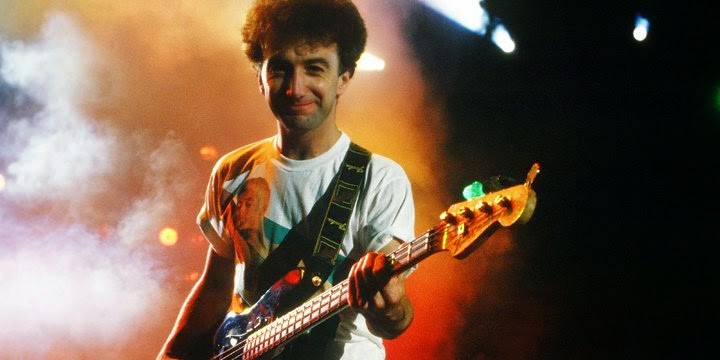Killer Queen means one thing: John Deacon’s killer bass line. Queen’s third album, 1977’s Sheer Heart Attack, represents a transitional point in the band’s sound – it took the prog-tinged elements of their earlier records and fused them with a more polished, song-orientated hard rock sound; the production on Sheer Heart Attack also marks a clear shift towards the ‘classic’ Queen sound. The public reaction to this sonic shift was clear, with the album reaching Number 2 in the UK and making a significant impact on the US Billboard album chart.
‘Killer Queen’ neatly encapsulates a number of the iconic elements of Queen’s sound; multitracked guitars, walls of sweeping vocal harmonies and an overriding sense of pomposity. Then there’s the bass…
John Deacon is, for my money, one of the most important British bassists in the history of the instrument. Along with Led Zep’s John Paul Jones, The Who’s John Entwistle and Paul McCartney, Deacon was responsible for elevating the instrument’s melodic status – no longer were bass players confined to an eternity of playing nothing but root notes.
Of course, there’s plenty of foundational, root note-orientated playing on ‘Killer Queen’, but the lines are elevated by John Deacon’s melodic sensibilities; whilst there’s not as much high register action as in other JD lines like ‘We Are The Champions’ or ‘Don’t Stop Me Now’, there’s still plenty here to keep us amused.
Queen – Killer Queen bass transcription.pdf
After announcing his arrival with a pentatonic fill in bar 5, John creates a smooth descending chromatic line through neat use of chordal inversions, hitting D against Gm (the 5th) and Db against Eb7 (the b7) – there’s actually scope to continue this semitone movement if you wish, moving to C and Cb to hit the 3rd of both the Ab and Abm chords before landing on the Bb at end of bar 8.
Verse 2 repeats the fill and descending line from Verse 1, but adds a couple of melodic flourishes; bar 36’s scalar line outlining Bb7-Eb and bar 37’s ear-grabbing plucked slide, which gives the illusion of a busy chromatic scale fill.
It’s back to business as usual until the outro, where John begins to work his way up the fretboard (from bar 80 onwards). Again, chord tones are the name of the game here – switching to the 3rd and 5th of the static Eb chord creates more melodic interest than simply pedalling the root.

